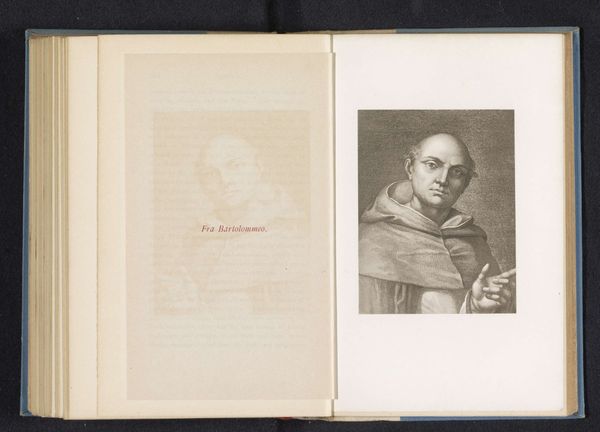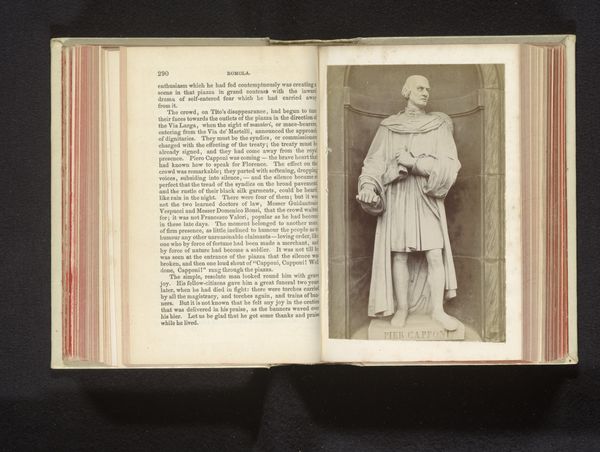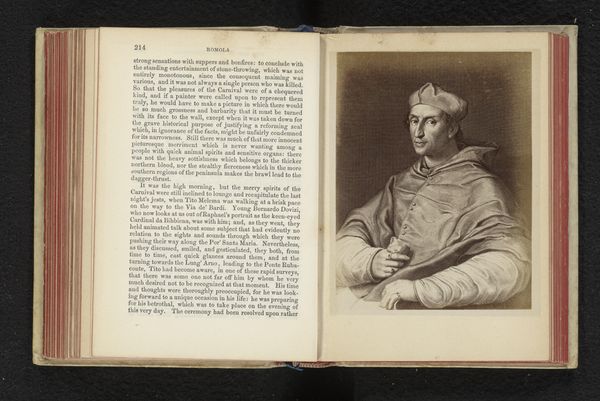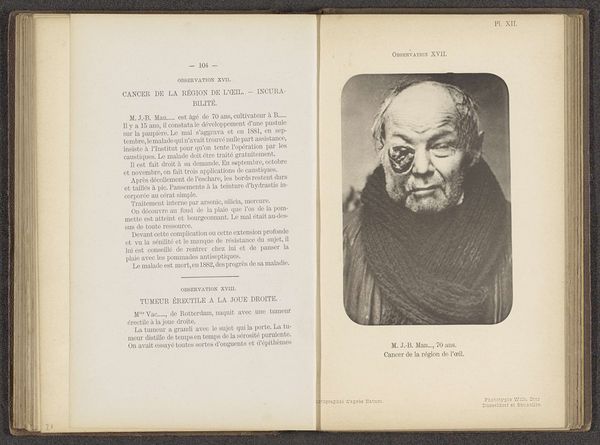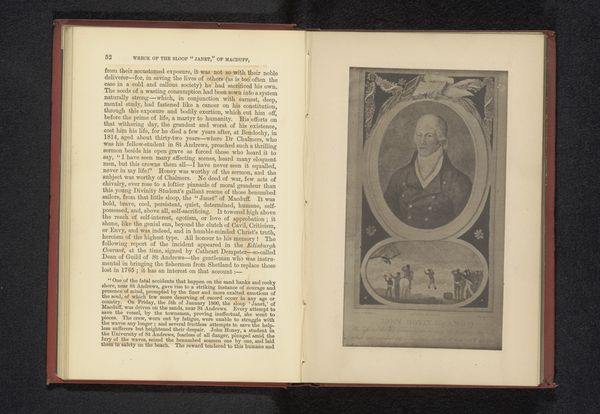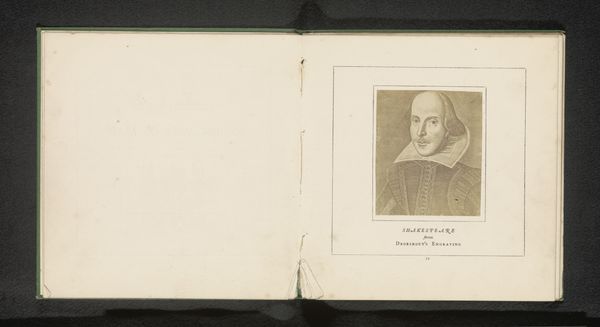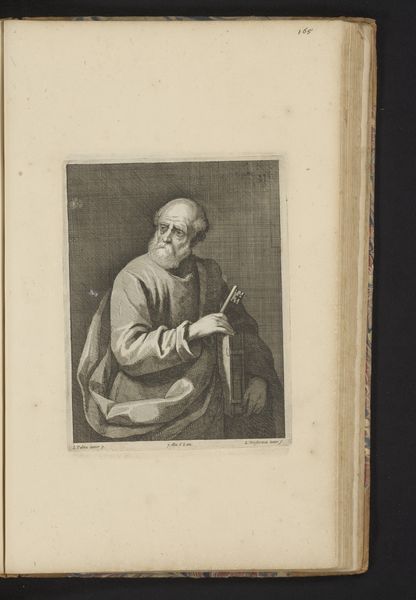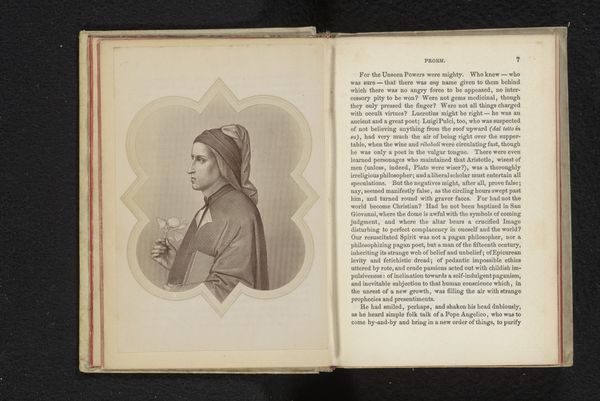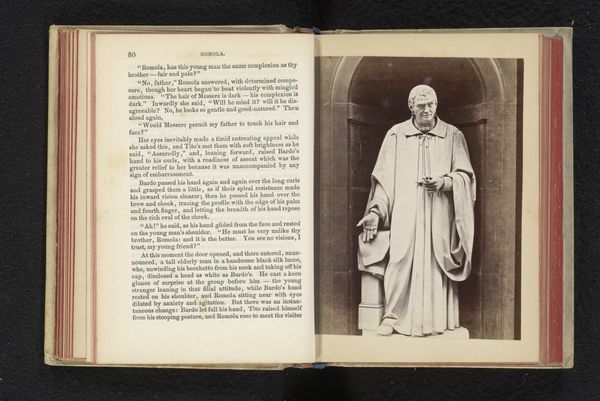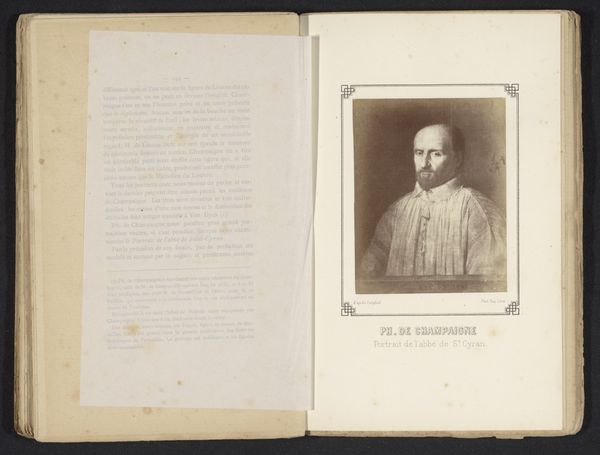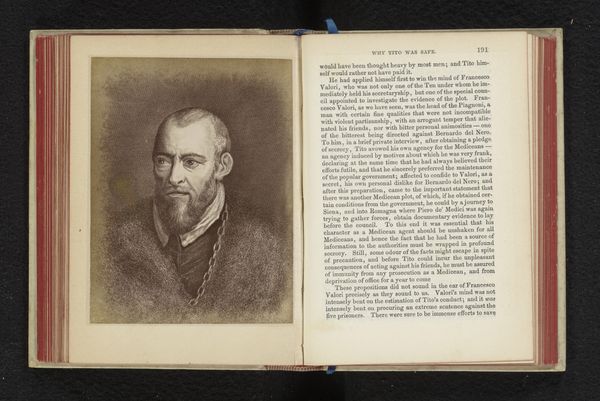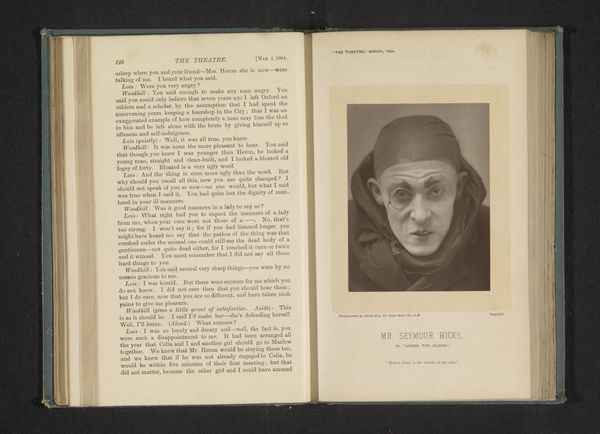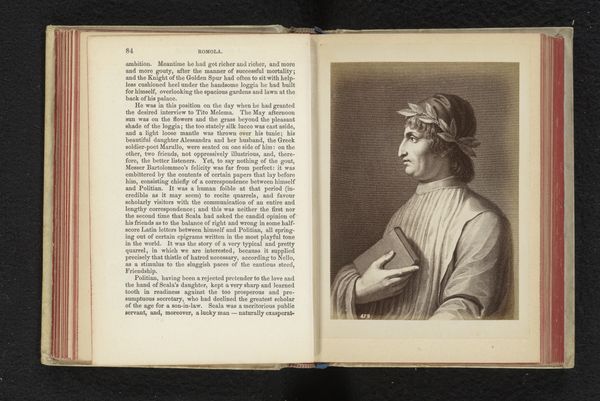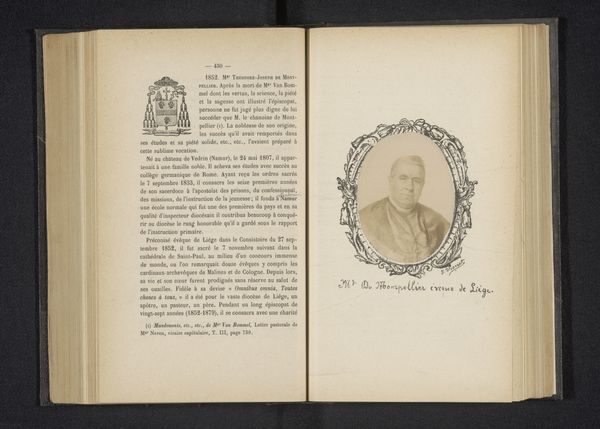
print, paper, engraving
#
portrait
# print
#
paper
#
italian-renaissance
#
engraving
Dimensions: height 125 mm, width 98 mm
Copyright: Rijks Museum: Open Domain
Curator: I see here a photographic reproduction of an engraved portrait of Fra Bartolommeo, dating from before 1863. It's printed on paper and bound in a book, displayed open. The artist responsible for the photo reproduction is Giacomo Brogi. Editor: Right, this image! It's quite striking how the engraving gives the subject such a stern expression. The tight cropping focuses entirely on the face and upper body. I’m curious about its place within history. What's particularly interesting to you about this portrait in its historical context? Curator: Well, let’s consider what it means to reproduce an image of an artist like Fra Bartolommeo, a Renaissance painter, through photography and printmaking in the 19th century. We must look at who this photo was made for, why the photographer thought this image should be made available and for who, considering who controls archives. These things help create collective memories and tastes. Editor: So, you’re saying it’s less about Bartolommeo himself, and more about the image’s role in constructing and distributing artistic and cultural ideas at the time of *its* reproduction? Curator: Exactly. What does choosing *this* artist and *this* portrait say about 19th-century taste and the construction of the "Italian Renaissance"? We must look to social structures. Also notice it’s inside a book. Was this image for the art lover or researcher to admire as part of a bigger collection of historical artifacts? What message did the original maker intend, and what happened to it along the way? Editor: That reframes the image in a completely new way. It makes you question its motivations! Curator: Precisely! The act of reproduction transformed a religious artist into a historical commodity, part of a larger narrative shaped by specific social and cultural forces. Editor: I never considered that reproducing it changed the narrative itself, but it does! Thanks for helping me learn!
Comments
No comments
Be the first to comment and join the conversation on the ultimate creative platform.
